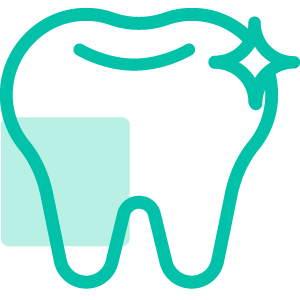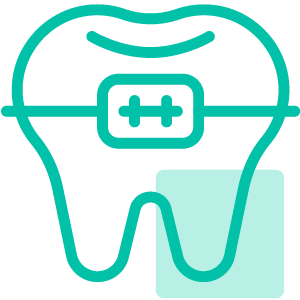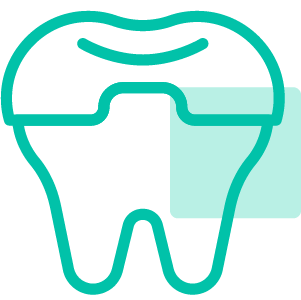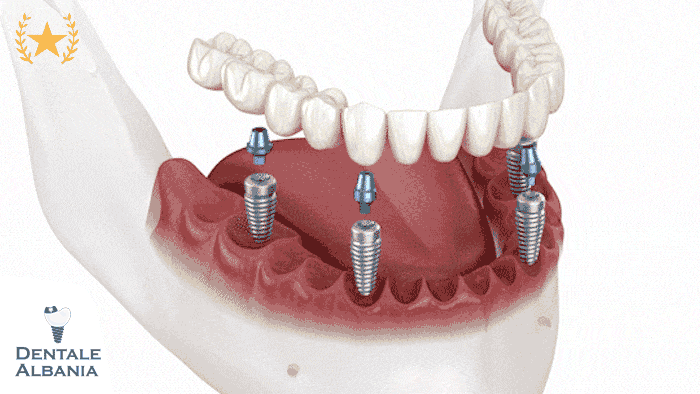Table of Contents
ToggleWhat Is Dental Reshaping and How Does It Work?

Dental reshaping — also known as enameloplasty, tooth reshaping, or teeth contouring — is a minimally invasive cosmetic dentistry procedure designed to subtly yet effectively improve the appearance of your smile. It involves gently removing small amounts of enamel from the tooth surface to adjust shape, size, length, or alignment.
This technique is especially popular for correcting minor imperfections such as uneven edges, small chips, or slight overlaps. While the terms tooth reshaping and tooth contouring are often used interchangeably, they both refer to the same method of sculpting enamel to improve dental aesthetics. The main goal of dental reshaping is to create a more balanced and harmonious smile without the need for invasive treatments like veneers or braces.
Unlike other cosmetic procedures, enameloplasty does not involve any anesthesia, drilling into sensitive areas, or recovery time. That’s because the enamel — the outermost layer of your teeth — contains no nerves. Therefore, reshaping it is entirely pain-free for most patients.
Even minimal enamel reduction can lead to significant improvements. For example, smoothing out sharp canines or leveling uneven incisal edges can enhance the symmetry of your front teeth and instantly boost your smile’s appeal. It’s also an excellent complement to treatments like whitening or orthodontics.
Patients often turn to tooth reshaping when they want fast, affordable, and low-risk aesthetic results. Whether it’s evening out worn teeth or softening overly prominent ones, this simple yet skilled cosmetic solution offers instant transformations with minimal effort.
How Is Tooth Reshaping Performed Step-by-Step?
- Initial consultation and evaluation: Your dentist examines your teeth and may take X-rays to ensure there’s enough healthy enamel for reshaping.
- Planning the adjustments: The dentist marks areas where enamel needs to be contoured to improve shape or proportion.
- Contouring with precision tools: Using a sanding disc, drill, or laser, small amounts of enamel are gently filed away.
- Polishing the teeth: After shaping, the dentist smooths and polishes the treated teeth to give them a natural finish.
- Bite check and final refinements: The dentist ensures your bite remains comfortable and balanced.
Who Can Benefit from Tooth Reshaping Procedures?
Tooth reshaping is ideal for individuals looking to improve the overall look of their smile without undergoing major dental procedures. It’s best suited for those with minor dental imperfections that do not require orthodontic intervention or extensive restorative work.
This cosmetic solution is particularly effective if:
- You have small chips, uneven edges, or irregularly shaped teeth.
- You want to shorten long teeth or smooth out sharp points, such as overly pronounced canines.
- Your teeth are slightly overlapping or appear misaligned, but not enough to warrant braces or Invisalign.
- You are post-braces and want to refine the final look of your smile.
- You prefer a non-invasive alternative to veneers or bonding.
For tooth reshaping to be viable, patients must have healthy teeth and sufficient enamel thickness. Since the procedure involves removing part of the enamel, it’s essential that your teeth are free from decay, infection, or gum disease. A dentist will assess your oral health before proceeding to ensure it’s safe.
Can Front Teeth Be Reshaped Safely and Effectively?
Yes — reshaping large or uneven front teeth is one of the most common and effective uses of tooth contouring. Dentists can level out one overly long incisor or adjust the symmetry of your smile by subtly refining edges.
This procedure is especially helpful if you have:
- Big front teeth that stand out disproportionately
- A single longer tooth disrupting smile harmony
- Jagged edges due to wear or grinding
The outcome is typically a more proportionate and aesthetically balanced smile, often completed in just one session.
Can I Reshape My Teeth Without Veneers or Braces?
Absolutely. One of the biggest advantages of dental reshaping is that it serves as a standalone solution for many patients who want cosmetic improvements but don’t want veneers or braces.
However, it’s important to understand its limitations:
- Tooth reshaping is not suitable for major alignment issues — in such cases, orthodontic treatments or veneers may be recommended.
- It’s best used to refine the shape and appearance of teeth, not to correct major structural concerns.
In summary, if you’re seeking a simple and subtle way to enhance your smile without undergoing more aggressive or costly procedures, tooth reshaping might be the perfect option.
How Much Does Tooth Reshaping Cost and What Affects the Price?
When considering cosmetic dental treatments, cost is often one of the first questions patients ask. Fortunately, tooth reshaping — also referred to as tooth contouring or enameloplasty — is among the most affordable procedures in cosmetic dentistry.
In the UK, the average cost of tooth reshaping ranges from £60 to £300 per tooth, depending on the complexity of the case and the clinic’s location. Some practices set a minimum treatment fee, typically around £150 to £200, even if only a single tooth is being reshaped. In the US, costs generally range from $50 to $300 per tooth.
What Factors Influence the Cost of Tooth Contouring?
- Number of teeth involved: The more teeth you have contoured, the higher the total cost — though clinics may offer bundled pricing or discounts for multiple teeth.
- Location of the clinic: Prices tend to be higher in major cities like London compared to smaller towns or rural areas.
- Dentist’s expertise and experience: Highly skilled cosmetic dentists with established reputations may charge more for their precision and results.
- Level of reshaping needed: Simple smoothing of edges costs less than significant reshaping of big or irregular front teeth.
- Additional treatments: Combining reshaping with bonding, whitening, or gum contouring may increase the overall cost.
Is Reshaping Big Front Teeth More Expensive?
Yes, reshaping larger front teeth — particularly if they require more extensive filing to reduce length or bulk — may cost more due to the increased time and precision involved. These cases often demand careful balance to maintain tooth integrity while achieving natural aesthetics.
Clinics may charge:
- A flat rate per tooth regardless of size
- Or increase pricing based on complexity, especially for highly visible teeth like the central incisors
Always request a personalised quote during your consultation. Some clinics offer free e-consultations or digital simulations to help you understand the projected outcome and pricing before committing.
Is Dental Reshaping Painful or Unsafe?
A common concern for many considering this procedure is whether tooth reshaping is painful or poses any health risks. The good news? Dental reshaping is completely pain-free and very safe when performed by an experienced cosmetic dentist.
The outermost layer of the tooth, enamel, has no nerve endings. That means during the procedure — as the dentist smooths and sculpts the surface — you won’t feel any pain or discomfort. In fact, most people are surprised by how quick and easy the entire process is. No anesthesia is needed, and you can return to your day immediately after treatment.
From a safety perspective, enameloplasty is minimally invasive and does not affect the inner tooth structure, gums, or nerve tissue. It involves the removal of just fractions of a millimeter of enamel, enough to reshape without weakening the tooth — as long as it’s done conservatively.
However, tooth reshaping is not recommended for people with:
- Very thin enamel
- Tooth decay
- Gum disease
- Severe alignment issues
In those cases, your dentist will recommend an alternative like bonding, veneers, or orthodontics.
Will I Get Sensitivity or Damage After Contouring?
While rare, tooth sensitivity may occur if too much enamel is removed — which is why it’s important to choose a skilled and experienced provider.
To avoid discomfort or long-term risks, dentists follow a measured approach:
- They usually limit enamel removal to 0.5–1 mm, which is considered safe.
- They assess your enamel thickness beforehand using imaging or visual inspection.
- The reshaped teeth are polished and sealed, further protecting them.
Tips to prevent issues after tooth reshaping:
- Use non-abrasive toothpaste to avoid further enamel wear.
- Avoid biting on hard items (ice, pens, hard candies).
- Maintain excellent oral hygiene to protect your newly shaped teeth.
- Visit your dentist regularly to monitor enamel health.
Overall, tooth contouring is a low-risk, conservative way to enhance your smile — as long as you’re a suitable candidate and it’s done correctly.
How Long Does Tooth Contouring Take and Last?

One of the biggest advantages of tooth contouring (also known as dental reshaping) is its speed and simplicity. In most cases, the entire procedure is completed in a single appointment, making it an ideal option for anyone looking to enhance their smile without the need for multiple dental visits or a lengthy recovery period.
For a single tooth, the average treatment time is around 30 minutes, but it can vary slightly depending on the number of teeth being treated and the amount of reshaping required. Some patients are even able to get their teeth reshaped during their consultation visit, especially when only minor adjustments are needed.
Because no anesthesia or numbing agents are required, patients can return to work or daily activities immediately after their session — with no downtime.
What Makes This Procedure Worth It for Many Patients?
Tooth contouring is often viewed as one of the best-value cosmetic procedures available, thanks to its combination of affordability, speed, and aesthetic impact.
Key benefits include:
- Instant results: The improvement in your smile is immediate after just one visit.
- No pain or recovery: You leave the clinic without discomfort or downtime.
- Subtle but powerful aesthetic improvement: Even the smallest adjustments can bring symmetry and balance to your smile.
- Low cost: Compared to veneers or braces, reshaping is a budget-friendly way to upgrade your smile.
- No ongoing maintenance required: Unlike bonding or aligners, you won’t need special upkeep beyond regular oral care.
While the results of dental reshaping are permanent, they can be affected by long-term habits such as teeth grinding or chewing on hard objects. Still, for most patients, the results last for years without the need for further adjustments.
And if you ever wish to enhance the result even more, tooth reshaping can easily be combined with other treatments like teeth whitening, bonding, or gum contouring for a full smile makeover.
What Are the Risks and Downsides of Dental Reshaping?
While dental reshaping offers numerous benefits, it’s important to consider potential risks and limitations before deciding if it’s the right choice for you. Although this procedure is relatively safe, there are a few factors to keep in mind.
Enamel Removal and Sensitivity
One of the most significant risks associated with tooth reshaping is the removal of enamel. Since enamel is the protective outer layer of your teeth, over-removal can lead to tooth sensitivity and increased vulnerability to decay.
That’s why it’s critical for the dentist to:
- Limit enamel removal to no more than 0.5–1 mm.
- Avoid reshaping teeth with thin or weak enamel.
- Ensure that reshaped teeth are polished and sealed to protect them.
If too much enamel is removed, it can also affect the long-term structural integrity of the tooth, leading to potential issues down the line.
Not Suitable for Major Dental Issues
Dental reshaping is not a solution for everyone, especially if you have more serious dental problems such as:
- Misaligned teeth: If your teeth are severely crooked, you may need braces or other orthodontic treatments.
- Tooth decay: If you have cavities or unhealthy teeth, reshaping may not be an option until those issues are addressed.
- Severe damage: For teeth that are significantly chipped or broken, dental bonding or veneers may be more appropriate than reshaping.
If you have any of these conditions, your dentist will likely recommend alternatives like veneers, bonding, or orthodontic treatments.
When Reshaping Isn’t Advisable
Some patients may not be suitable for tooth reshaping at all. This could be due to factors like:
- Health problems such as untreated tooth decay, gum disease, or enamel erosion.
- A thin enamel layer that doesn’t leave enough material to safely reshape.
- High dental expectations — if you want dramatic changes, reshaping may not be the right solution. Procedures like veneers or braces could be more effective for larger corrections.
If your dentist determines that reshaping isn’t advisable, they will discuss other cosmetic options that may better suit your needs.
Are There Safer Alternatives If Contouring Isn’t Suitable?
If dental reshaping isn’t a good fit for your smile, don’t worry — there are several alternatives that can help you achieve the results you want. Some options include:
- Dental bonding: This procedure uses a tooth-colored resin to fill in gaps, build up teeth, or correct minor imperfections. It’s a versatile option that can address issues reshaping can’t, such as broken or deeply chipped teeth.
- Veneers: These thin shells of porcelain or composite resin cover the front of the teeth to improve their appearance. They are ideal for more significant cosmetic changes, such as correcting major discoloration or misalignment.
- Orthodontics: For more complex alignment issues, braces or Invisalign can provide permanent and reliable solutions, even out the bite, and straighten your teeth.
Your dentist will discuss your unique needs and recommend the best approach for your smile.
How Should You Care for Your Teeth After Reshaping?
After undergoing dental reshaping, proper care is essential to maintain the long-term health and appearance of your newly contoured teeth. Although the procedure is non-invasive and doesn’t require recovery time, it’s crucial to follow certain aftercare tips to prevent complications like enamel wear or sensitivity.
Maintain a Gentle Brushing Routine
While tooth reshaping doesn’t require extensive aftercare, it’s important to brush your teeth carefully, especially in the first few days after treatment:
- Use a non-abrasive toothpaste to avoid further wear on the enamel.
- Brush gently to avoid applying excess pressure to the newly contoured surfaces.
- Brush twice a day, ensuring that you reach all areas of your teeth, including between them.
By maintaining this gentle brushing routine, you will help protect the enamel from being overly worn down and prevent any potential sensitivity from developing.
Avoid Hard Foods and Habits
To protect your reshaped teeth and allow them to fully adjust, it’s important to avoid certain habits and foods immediately after the procedure:
- Avoid biting on hard objects like ice, pens, or fingernails.
- Steer clear of sticky or hard foods (e.g., caramel, nuts, or chewing gum) that can put unnecessary stress on your teeth.
- Refrain from nail-biting or using your teeth as tools for opening packages.
These simple precautions will help your reshaped teeth maintain their integrity and reduce the risk of damage to the enamel.
Schedule Regular Dental Checkups
Even though dental reshaping doesn’t require extensive aftercare, regular checkups with your dentist are important to ensure your reshaped teeth stay in great condition:
- Visit your dentist at least every six months for routine cleanings and checkups.
- During these visits, your dentist can monitor the condition of your reshaped teeth, check for any signs of wear, and ensure that the reshaping has not affected your bite.
Regular checkups allow for early detection of any potential issues, such as tooth sensitivity or enamel thinning, and will help your dentist recommend timely solutions.
Consider Bonding or Additional Treatments for Added Protection
If you had bonding applied alongside your reshaping to enhance the contour, keep in mind that bonding material can be more prone to wear over time. To keep it in top condition:
- Avoid staining foods and beverages like coffee, tea, or red wine that can discolor the bonding.
- Follow your dentist’s care instructions to ensure the longevity of the bonding material.
In some cases, your dentist may suggest periodic touch-ups or additional treatments to keep your smile looking fresh and well-maintained.
Frequently Asked Questions About Dental Reshaping

In this section, we’ll address some of the most common questions people have when considering dental reshaping.
Is Tooth Reshaping Painful?
No, tooth reshaping is generally pain-free. Since it only involves removing small amounts of enamel — and the enamel itself doesn’t contain nerves — most patients feel no discomfort during the procedure. For those who are especially sensitive, a local numbing agent may be used, but in most cases, anesthesia isn’t necessary. Post-treatment sensitivity is rare but may occur for a short time, especially if more enamel was removed.
How Much Does It Cost to Reshape Your Teeth?
The cost of dental reshaping varies depending on several factors, including the number of teeth treated and the dentist’s location. On average:
- In the UK, tooth reshaping can cost between £60 to £300 per tooth.
- In the US, the typical cost range is between $50 to $300 per tooth.
-
In Albania, Tooth Reshaping (Single Tooth): €30 – €80 per tooth
Keep in mind that prices may be influenced by the clinic’s reputation, your geographic location, and whether the procedure is combined with other cosmetic treatments like bonding or whitening. It’s always a good idea to ask for a personalized quote based on your needs.









